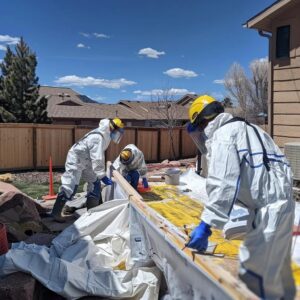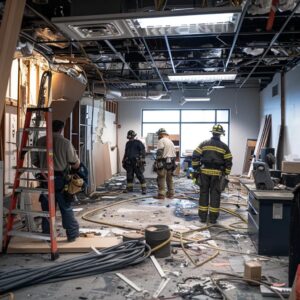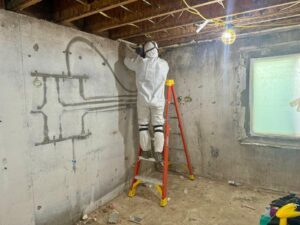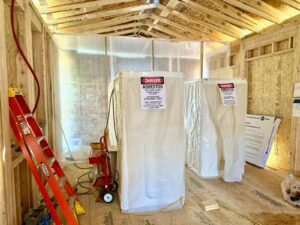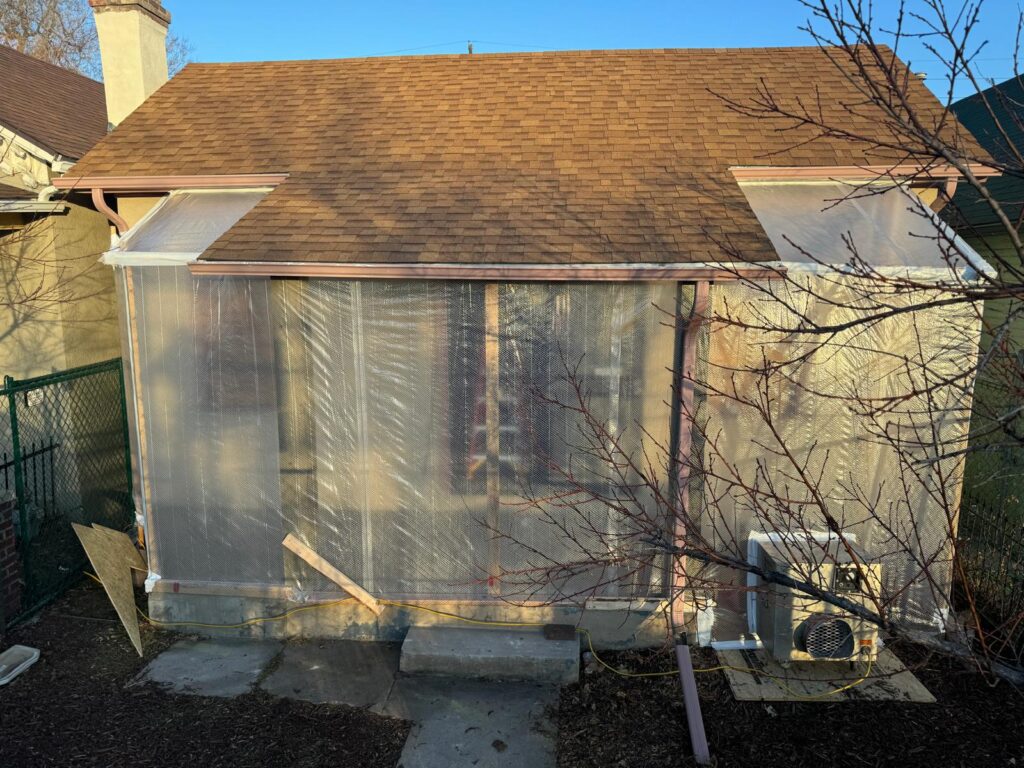
If you’re a Denver homeowner facing potential asbestos removal, understanding what to expect can transform this stressful situation into a manageable project that protects your family’s health and property value. This comprehensive guide walks you through every step of professional asbestos removal in Denver.
Why Denver Homeowners Need to Know About Asbestos
Denver’s architectural history means many homes contain asbestos-containing materials (ACMs). This requires informed decision-making and professional handling when materials are disturbed or deteriorating.
Common Places Asbestos Hides in Colorado Homes
In Denver homes, asbestos typically appears in popcorn ceilings from the 1960s-70s, vinyl floor tiles and adhesives, pipe insulation around furnaces (especially in Capitol Hill and Highlands neighborhoods), roof shingles and siding on bungalows and ranch-style homes, joint compound in drywall, attic insulation, and furnace ductwork.
Denver’s Building Boom Era and Asbestos Use (1940s-1980s)
Denver experienced significant growth during the post-war boom, with thousands of homes built between 1940 and 1980, when asbestos use peaked. Neighborhoods like Park Hill, Glendale, and Lakewood contain numerous homes from this era, making professional inspection essential before renovations.
Before the Removal Begins: Initial Steps Every Denver Property Owner Must Take
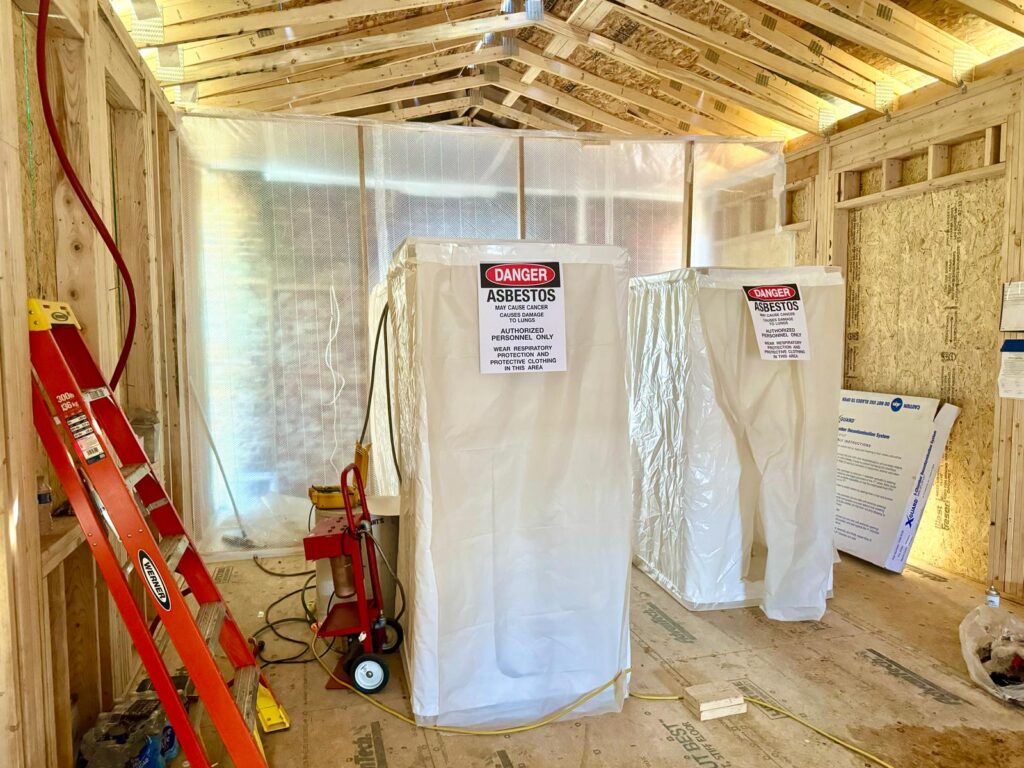
The Complete Asbestos Removal Timeline: Week by Week
Phase 1: Planning and Permits (Days 1-3)
Your contractor develops a detailed work plan specifying removal methods, safety protocols, and disposal procedures. Denver contractors must notify Colorado Department of Public Health and Environment at least 10 working days before beginning removal involving more than 260 linear feet or 160 square feet of ACMs.
Phase 2: Site Preparation (Days 4-5)
Contractors create a contained work environment by sealing work areas with plastic sheeting, shutting down HVAC systems, and installing negative air pressure machines. All furniture must be removed or sealed. A decontamination chamber allows safe worker entry and exit.
Phase 3: Active Removal (Days 6-8)
Workers wearing full protective equipment use specialized tools to carefully remove asbestos materials. Wet removal methods minimize dust creation. All materials are immediately sealed in labeled disposal bags. Air monitoring equipment continuously measures fiber levels while HEPA filtration systems maintain negative pressure.
Phase 4: Final Cleanup and Testing (Days 9-10)
The work area undergoes thorough HEPA vacuuming and wet cleaning. An independent industrial hygienist conducts clearance air sampling to verify fiber levels meet Colorado’s safety standards. Only after passing clearance testing can containment barriers be removed.
What Happens Inside Your Home During Removal
How Contractors Create Safe Work Zones
Professional removal transforms part of your home into a controlled laboratory environment. Workers construct multiple plastic barriers, creating a clean room where asbestos can be safely handled. Negative air pressure machines ensure airborne particles are pulled into HEPA filtration systems, protecting unaffected areas.
The Equipment You’ll See (And Why It’s Necessary)
Expect industrial-grade equipment, including negative air machines, HEPA filtration units, air monitoring devices, and decontamination chambers. Workers wear full-body protective suits, respirators, and protective eyewear. The three-stage decontamination process ensures workers don’t carry contaminated materials outside the work area.
Why You’ll Need to Temporarily Relocate
You cannot remain home during removal. The process creates unavoidable disruptions including shutoff utilities, sealed-off areas, and ongoing air monitoring. Most Denver families stay with relatives or in hotels during the 7-10 day process. Plan early and discuss accommodation assistance with your contractor.
Colorado’s Asbestos Regulations: What You Need to Know
The Colorado Department of Public Health and Environment oversees asbestos regulation. Contractors must hold state certification and follow NESHAP guidelines. Notification requirements apply to projects involving significant amounts of ACMs.
1. Denver County Specific Regulations
Denver County may have additional requirements beyond state regulations. Some neighborhoods with historic designations have special considerations affecting project timelines. Waste transportation requires licensed hazardous waste carriers and specific routing to approved disposal facilities.
2. Disposal Laws and Approved Facilities
Colorado law requires disposal at licensed hazardous waste facilities. Nearest approved facilities include sites in Commerce City and Brighton. Contractors must provide waste manifests documenting proper disposal. Illegal dumping carries fines up to $25,000 per day.
Choosing the Right Asbestos Removal Company in Denver
1. Essential Certifications to Look For
Verify contractors hold Colorado asbestos contractor certification and EPA RRP certification. Workers should have individual training certifications and current medical clearances. Insurance coverage must include general liability and pollution liability insurance.
2. Questions to Ask During Your Consultation.
Ask about project timeline, containment methods, air monitoring procedures, and clearance testing protocols. Inquire about disposal methods and request waste manifests from recent projects. References from recent Denver projects provide valuable insights into contractor performance.
Red Flags to Avoid When Hiring.
Avoid contractors who quote significantly below market rates, don’t provide detailed written estimates, lack proper licensing or insurance, suggest DIY removal options, can’t provide local references, don’t explain notification requirements, or offer to dispose of materials “cheaply.”
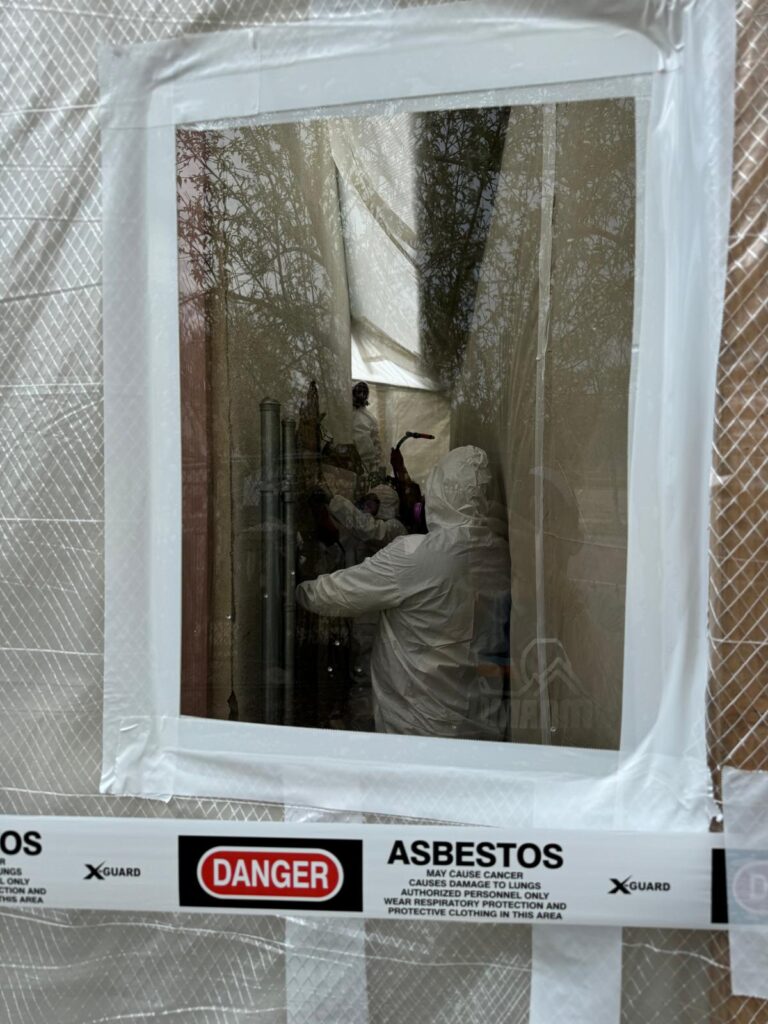
After the Removal: Ensuring Your Family’s Safety
Understanding Clearance Testing Results
Clearance testing involves collecting air samples and comparing fiber counts to Colorado’s clearance standards. Results must show levels below 0.01 fibers per cubic centimeter before reoccupancy. Visual inspection confirms complete removal and proper cleaning.
When It’s Safe to Return Home
Return home only after receiving written clearance from an independent industrial hygienist. This typically occurs 24-48 hours after removal completion. Utilities can be restored and containment barriers removed only after clearance approval.
Long-term Monitoring and Maintenance
Keep all project documentation, including inspection reports, work plans, clearance certificates, and disposal manifests. This paperwork proves proper handling and may be required for future property sales. Monitor remaining asbestos materials in your home with regular inspections every 2-3 years.
Protecting Your Denver Family’s Future
Professional asbestos removal protects your family’s health and property value. While the process requires temporary disruption and significant investment, proper removal eliminates long-term health risks and ensures compliance with Colorado regulations.

